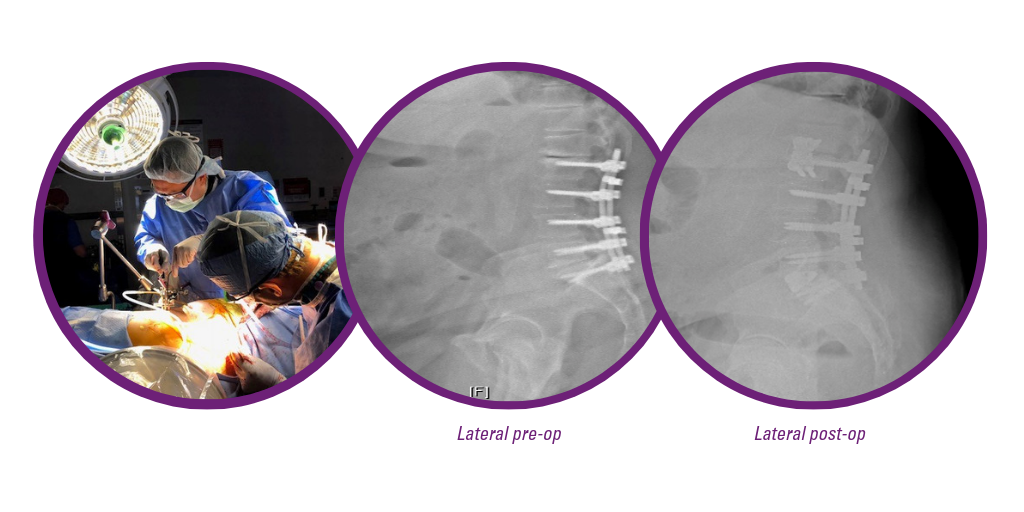![]()
In our Featured Case series, NuVasive® will showcase innovative cases and how our unique technology is integrated to create a cohesive system to address key patient pathologies. Our mission at NuVasive is to change patient lives and we are constantly focused on how to deliver improved patient outcomes, increase OR safety and efficiency, and extend our technology to future applications.
In this Featured Case, we present a 74 year-old male who had a prior multilevel TLIF with flatback from L2-S1. After the TLIF surgery, the patient left with persistent back and bilateral buttock pain worse than before. The patient presented with sagittal imbalance and pseudarthrosis at L5-S1. While many surgeons may recommend an L3 PSO with a revision fusion T10-pelvis, Dr. Cheng believed the NuVasive® procedural approach and technology would serve the patient well. The procedure included loosening set screws at S1, a Lateral ALIF™ at L5-S1 with a 30 degree BASE cage, re-tightening the knock-off P.O.D. screws at S1, and then performing an XLIF® at L1-2 with a Decade plate.

In order to assess the patient’s alignment both before and throughout the procedure, Dr. Cheng utilized the Integrated Global Alignment (iGA) platform. Through NuVaMap™, Dr. Cheng was able to evaluate 36″ standing x-ray images for his surgical planning. Preoperative lumbar lordosis was 16 degrees, a pelvic tilt of 32 degrees, and an SVA of 11.0 centimeters. Dr. Cheng’s goals for alignment were to restore physiologic lumbar lordosis and to have a pelvic tilt of less than 20 degrees with an SVA of less than five centimeters. Utilizing NuVaMap’s post-op radiographic review feature, the patient realized a 30 degree improvement in lumbar lordosis with a pelvic tilt of 19 degrees and an SVA of 5.2 cm.
Dr. Cheng shares, “The patient did so well that he left with very little pain and only three days post-surgery. Remarkably, he already has dramatic improvement of his pelvic tilt and sagittal balance!”
The patient was walking within 24 hours and had no left thigh pain, numbness, or weakness.
Click here to read more featured cases.
